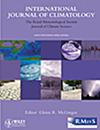Cruel Summer (and Autumn): Humid Heat Trends, Extremes, and Mechanisms in the Southeast United States
Abstract
Humid heat has increased in frequency, intensity and duration in many locations across the globe, particularly those with warm and moist climates like much of the Southeast United States. This study employs an established wet bulb globe temperature (WBGT) estimation formula and high-resolution reanalysis data to develop a custom gridded WBGT dataset for the Southeast. Subsequently, summer and autumn WBGT (humid heat) trends and extremes are elucidated for 1950–2023. Results complement and correspond well to recent station-based work as well as gridded trends in the Universal Thermal Comfort Index (UTCI). Overall, trends in average and extreme (90th percentile) WBGT are larger and more widely statistically significant at night and during summer. Autumn WBGT increases are largest and most significant in the Florida Peninsula and near the Gulf Coast, where the heat content of the adjacent water peaks in September. Furthermore, there are large increases in the frequency and duration of summer night-time extremes; regions near the Gulf and in Florida are experiencing nearly three additional extreme summer nights per decade, and extreme events are approximately one night longer per decade. A quantification of WBGT components shows that moisture (dewpoint) increases exceed temperature increases and are the largest contributors to WBGT across most of the Southeast, except in parts of the Appalachian and Piedmont regions where temperature changes dominate. Wind speed and solar radiation changes are quite small across the Southeast and are at best minor contributors to WBGT trends. Results support previous literature that moisture changes are most responsible for humid heat trends in warm and moist climates.


 求助内容:
求助内容: 应助结果提醒方式:
应助结果提醒方式:


